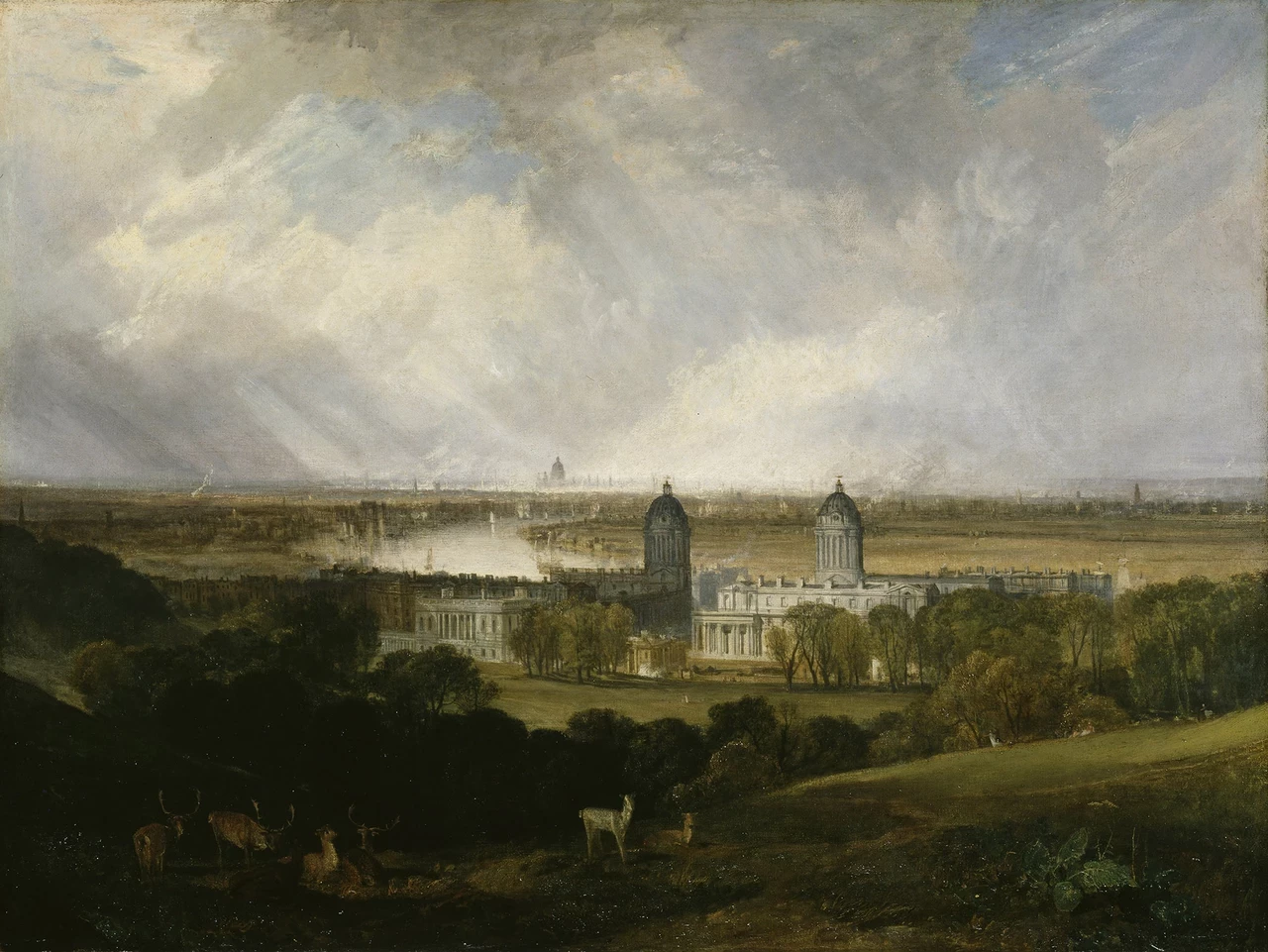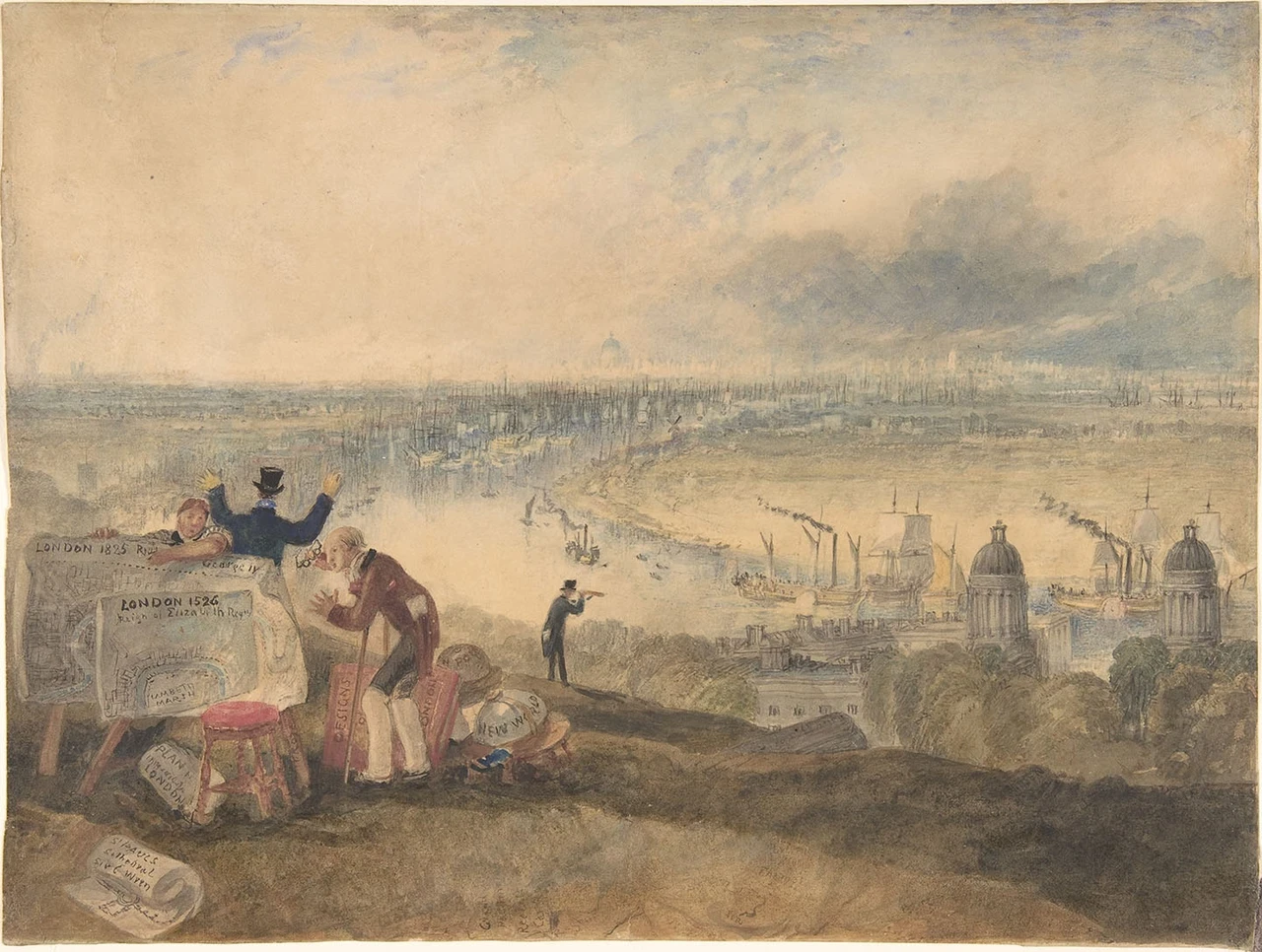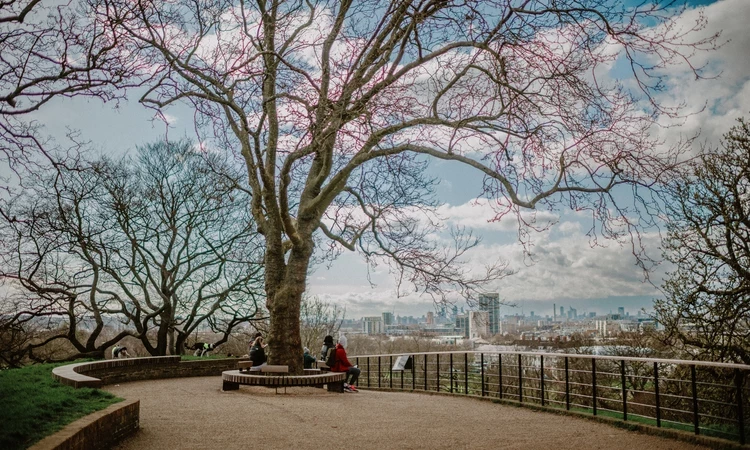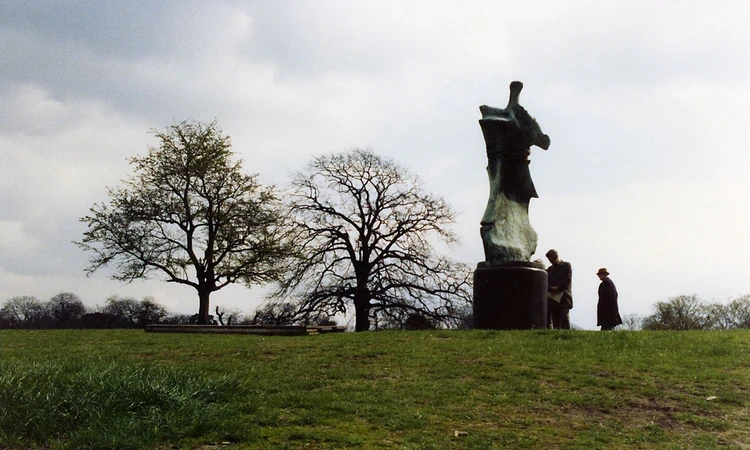
Turner at Greenwich Park
Greenwich Park is an inspiration for artists. Over the centuries, hundreds have attempted to capture its celebrated views – from world famous figures like Canaletto, Delacroix and Whistler to scores of talented local amateurs.
Turner and London
J. M. W. Turner (1775 – 1851), nicknamed the ‘painter of light’, is one of the most celebrated artists that Britain has ever produced. He is widely recognised as one of the greatest painters of landscapes and seascapes, with many of his works on display at Tate Britain, the National Gallery and the National Maritime Museum.
His output was prodigious – he left behind more than 550 oil paintings, 2,000 watercolours and 30,000 works on paper. Today, you can see his portrait on £20 notes – he is the first ever artist to be granted this distinction.
One of Turner’s best-known paintings is The Fighting Temeraire (1839), which depicts a British naval ship’s final journey along the Thames to nearby Rotherhithe. The artist was a Londoner and knew the river very well, recognising its crucial role in British history and culture – as Sir Winston Churchill would later say, the Thames is a ‘silver thread which runs through the history of Britain’.
The Thames is also a thread that runs through Turner’s works including a famous view from Richmond Hill and Rain, Steam and Speed depicting an impressionistic train crossing a bridge at Maidenhead. It is therefore no surprise that the artist painted two dramatic perspectives over the Thames and London from the hills in Greenwich Park.
One Tree Hill
In 1809 Turner painted the view from One Tree Hill, looking over the majestic buildings of the Old Royal Naval College – then known as Greenwich Hospital. He captured the sweep of the River Thames winding towards St. Paul’s Cathedral in the distance, with much of the wider landscape reflecting its agricultural nature.
His painting from this spot is one of contrasts. The trees mark a division between the pastoral, deer-filled park in the foreground and the bustling metropolis beyond, with its chimneys, spires and ships.
This idea of Greenwich Park as a haven – somewhere serene, beyond the city – was often evoked in the Georgian period. Before the capital expanded to accommodate a booming population, Greenwich was on the edge of town – a place to escape from the bustle and noise of London.

When Turner exhibited this painting, he displayed it alongside an accompanying poem that he wrote himself:
Where burthen'd Thames reflects the crowded sail,
Commercial care and busy toil prevail,
Whose murky veil, aspiring to the skies,
Obscures thy beauty, and thy form denies,
Save where thy spires pierce the doubtful air,
As gleams of hope amidst a world of care.
The artist imagines the architecture of London piercing the smoky, smoggy sky, offering ‘gleams of hope’ in a ‘busy’ city full of ‘toil’ and ‘care’. All of this is observed from the distant tranquillity of One Tree Hill.
A Napoleonic context?
Turner’s painting was completed in 1809, the year when King George III’s Golden Jubilee was celebrated. At this time the country was engaged in the protracted Napoleonic Wars. This long and bitter conflict is perhaps referenced in this painting.
Many of Turner’s contemporaries would have recognised Greenwich Hospital as the place where Admiral Lord Nelson’s body had rested before being taken by river to his grand state funeral at St. Paul’s Cathedral – also visible in the painting.
Nelson had died in 1805, just four years earlier. He lost his life in the course of securing this decisive naval victory for the British at Trafalgar. This context might suggest a patriotic message behind Turner’s painting.
The Grand Ascent
In 1825, Turner returned to Greenwich Park – this time to capture the famous view from the top of the Grand Ascent. A higher and more central viewpoint than One Tree Hill, this spot offers a vista that is open, sweeping and dramatic. It is today – as it was in Turner’s time – one of the biggest draws for park visitors. This popularity with tourists and day-trippers is captured perfectly in Turner’s detailed watercolour.

The painting is all about views and looking. A small group of visitors admire the scene – one gazes through a telescope, while another gesticulates, perhaps pointing out landmarks. An easel displays maps and plans of London, both contemporary and historic – an allusion to the changing view and shifting city, which was expanding rapidly at this time.
A veteran sailor from Greenwich’s naval hospital is shown hunched over a cane. These elderly men, viewed as heroes by their contemporaries, were once one of the park’s key attractions. Visitors would enjoy hearing their stories about swashbuckling naval careers, perhaps paying them a few pennies in return for a look through their telescope.
A changing view
A comparison of Turner’s two Greenwich paintings reveals how much the city had changed between 1809 and 1825. In the later painting, there are many more ships on the river – and sailing ships are beginning to give way to steam ships, seen puffing smoke from their funnels.
There are many more buildings in 1825 too, suggesting booming commerce and an expanding population. A decade after the Napoleonic Wars, Britain increasingly saw itself as the dominant European and world power – this sense of expansion is reflected in Turner’s later image. Though the two images are very different in style and approach – one a formal oil painting, the other a watercolour study – they nevertheless capture a city in rapid transition.
Of course, London continues to change and new buildings appear on the horizon as the population rises and the city expands.
Greenwich Park, though, remains a refuge from the city - just as it was for Turner. It is a peaceful place from which visitors can watch these changes unfold.
As we look out over the skyscrapers of the London Docklands – standing where Turner once saw open fields – we might reflect that the words of his poem still ring true: ‘Commercial care and busy toil prevail.’
Related Articles
-
 Read
Read'The Pride of Greenwich: One Tree Hill' by Mr. T. Nicholls
This poem, first published in the 1780s, celebrates the prodigious view from One Tree Hill in Greenwich Park.
-
 Read
ReadHenry Moore at Greenwich Park
Moore had a deep appreciation for the history and landscape of Greenwich Park and selected this location to display one of his famous sculptures.